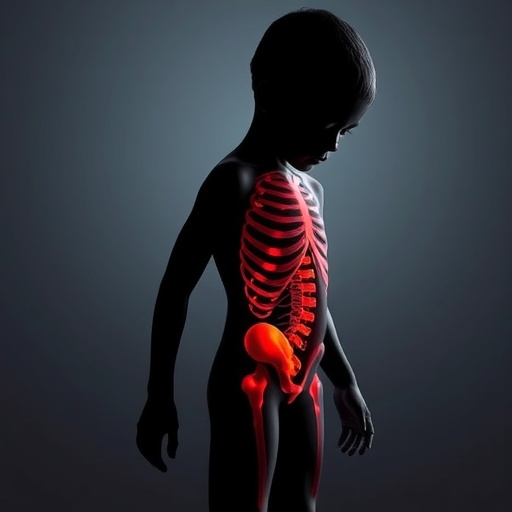In a groundbreaking development that could revolutionize pediatric health risk assessment, a recent study spearheaded by Wataru Kudo and colleagues introduces a novel approach using cluster analysis of body composition data in children. Published in the prestigious journal Pediatric Research in 2025, this study pioneers a sophisticated method of stratifying health risks in children based on intricate body composition metrics, potentially reshaping early detection and prevention strategies for chronic diseases in pediatric populations.
The study’s core revolves around the utilization of cluster analysis, a powerful statistical technique designed to categorize individuals into distinct groups sharing similar characteristics. Unlike traditional methods that often rely on isolated metrics such as BMI or weight percentiles, this research harnesses an integrated body composition dataset that includes fat mass, lean mass, and other nuanced parameters. This comprehensive approach provides a granular view of the physiological variances among children, allowing for more precise health risk profiling.
Central to the study’s innovation is the recognition that childhood health risks cannot be adequately captured by oversimplified measures. Body composition is a multi-dimensional construct influenced by genetics, nutrition, physical activity, and environmental factors. By applying cluster analysis, the researchers were able to identify discrete phenotypic profiles within the pediatric population that correlate strongly with varying degrees of health risk, including susceptibility to metabolic syndrome, cardiovascular conditions, and other chronic ailments.
An intriguing aspect of this research involves the identification of specific body composition clusters that appear to delineate risk trajectories more effectively than conventional markers. For instance, children categorized within clusters characterized by disproportionate fat mass relative to lean mass exhibited significantly increased markers of health risk, independent of their body mass index. This insight challenges entrenched paradigms in pediatric health management and underscores the clinical utility of detailed body composition analysis.
The methodology employed entailed rigorous data collection from a diverse cohort of children, ensuring broad applicability of findings across different demographics. Advanced imaging technology, possibly dual-energy X-ray absorptiometry (DXA), was likely utilized to obtain accurate measurements of body compartments. These data points were then subjected to unsupervised machine learning algorithms that autonomously defined clusters based on intrinsic similarities, minimizing bias and enhancing the robustness of the classification.
The implications of this study for pediatric healthcare are profound. By adopting cluster-based assessments, clinicians can better pinpoint children at high risk for developing chronic diseases, facilitating early interventions tailored to their unique physiological profiles. Traditional one-size-fits-all approaches may give way to personalized health strategies that optimize outcomes by focusing on underlying body composition abnormalities rather than mere weight or BMI statistics.
Moreover, this research opens new avenues for longitudinal studies that track how body composition clusters evolve over time in relation to lifestyle factors and interventions. Understanding the dynamic nature of these clusters could provide invaluable insights into the progression or amelioration of health risks, guiding public health policies and individual care plans alike.
The visualization of clusters, as demonstrated in the accompanying figure, depicts how children distribute across different body composition profiles and corresponding risk categories. The clusters range from those with favorable body composition and low health risk to those grouped into moderate and high-risk categories characterized by increasing adiposity and altered lean mass proportions. This nuanced stratification facilitates a more informed clinical decision-making process.
Furthermore, the study’s approach emphasizes the integration of machine learning with clinical data, reflecting a broader trend in medicine toward data-driven diagnostics. This fusion of computational power and clinical expertise embodies the future of healthcare, wherein large datasets are mined for patterns that inform predictive models and personalized treatment plans, particularly important in pediatric populations where early-life interventions have lifelong impacts.
Challenges remain in translating these cluster-based findings into routine clinical practice. The complexity of data acquisition, the necessity for sophisticated analytical tools, and the need for clinician training in interpreting cluster outputs may hinder immediate adoption. However, with advancements in medical imaging and software tools, these hurdles are likely to diminish, ushering in an era where detailed body composition analysis becomes a standard part of pediatric health evaluations.
The study also invites a reevaluation of current pediatric health guidelines that often prioritize BMI thresholds. Given that BMI can misclassify muscular children as overweight or fail to detect unhealthy adiposity distributions, cluster analysis of body composition represents a more precise biomarker for health risk. As such, this research advocates for revising diagnostic frameworks to incorporate multi-parametric assessments beyond simplistic anthropometric measurements.
Intriguingly, the authors highlight potential applications beyond risk assessment, suggesting that cluster analysis of body composition may inform nutritional recommendations and physical activity prescriptions tailored to distinct phenotypes. Children with clusters indicating low lean mass and high fat mass may benefit from interventions designed to increase muscle mass and reduce adiposity, whereas those in other clusters might require different strategies.
The study’s comprehensive approach addresses a crucial gap in pediatric medicine: the lack of robust tools for early, accurate identification of children at risk for chronic disease based on their physiological makeup rather than solely demographic or symptomatic factors. This paradigm shift from reactive to proactive care heralds improved health trajectories for future generations.
In conclusion, the pioneering work of Kudo et al. lays the foundation for a transformative approach to pediatric health risk assessment. By leveraging body composition data through sophisticated cluster analysis, this study transcends traditional metrics and promises more personalized, predictive, and preventive healthcare for children. As technological and analytical methods continue to evolve, the integration of such advanced methodologies into everyday clinical practice could become the gold standard, ultimately reducing the burden of chronic diseases originating in childhood.
Subject of Research: Health risk assessment in children using body composition-based cluster analysis.
Article Title: Cluster analysis with body composition data for health risk assessment in children.
Article References:
Kudo, W., Terui, K., Yamamoto, M. et al. Cluster analysis with body composition data for health risk assessment in children. Pediatric Research (2025). https://doi.org/10.1038/s41390-025-04447-6
Image Credits: AI Generated
DOI: https://doi.org/10.1038/s41390-025-04447-6




